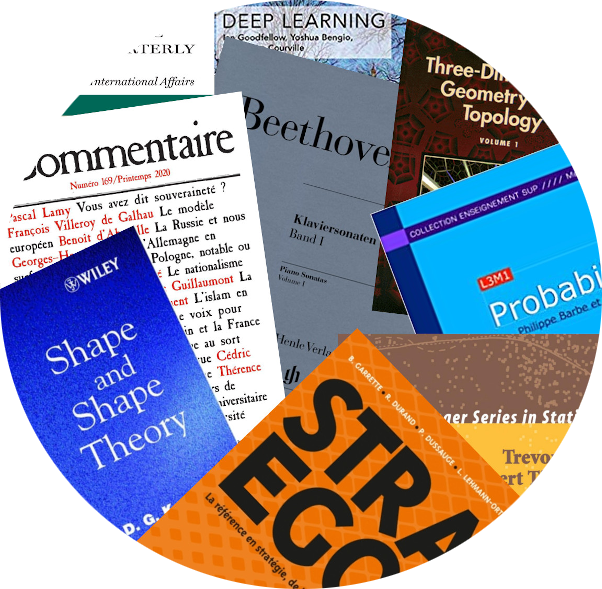 Philippe Barbe
Philippe Barbe

|
International legal landscape impacting mediaby Philippe Barbe
02 Dec 2020
|
Part 4 of 20 in a series examining the interplay of Data Science, AI, the media and advertising.
In Part 3 we compared the role that the explosive stars play in providing the color to the gunpowder in fireworks to the role legislation, particularly in the U.S., played in the fireworks impacting the media and advertising industries over the past 3 decades.
While the Internet abolished borders in terms of accessing content, governments have taken different approached to regulating that content.
For example, American laws have set some limit on free speech (obscenity and libel) while European laws tend to be slightly more restrictive, i.e. forbidding defense of Nazism.
This raises the substantial legal questions of whether an American company offering content (produced legally in the USA) in Germany that is in fact illegal in Germany, is covered by American laws or German ones. If the former is the case then why are traditional publishers not covered by American laws when they sell books abroad?
The current Internet manifestation of the media industry poses the question of extraterritoriality of the law and over the past 20 years the US has claimed evermore extraterritoriality that protects its industries. In response, other countries have passed regulations that weaken these claims.
International agreements offer ways to resolve these conflicts.
As we mentioned in Part 3, international treaties govern copyright protection.
By operating on the edge of the law, large tech companies have been able to push news produced by the traditional media to their users while paying no price for that content.
Currently France and Australia are engaged in legal battles to force Google and Facebook to pay copyrights for these snippets. It is estimated that 80% of the news seen on social media platforms comes from the traditional edited media. Not only is this a big issue for the media industry, it also points to their inability to generate value from their product, a topic for a future article in this series.
Double Irish and single malt.
Another significant international legal matter has had and will continue to have, profound impact on the media and advertising landscape.
Leveraging the principle of corporations paying taxes on their profit in the country where the profits occur, following the deregulation of the 1980s, countries around the world lured businesses by lowering their corporate taxes.
In the case of the giant Internet companies this is a very complicated matter. A person in France may be looking at content generated in Australia, on the website of a company based in the US, with an advertising subsidiary in Sweden, with the content being stored in a server in Germany, and an ad for a company based in London, pushed from a server based in Italy.
Where is the profit coming from?
Ireland famously offered a de facto flat tax rate of less than 2% compared to 20-30% in most of the rest of Europe and North America, leading to complex profit shifting and corporate tax optimization strategies that became known as the tasteful Double Irish, with or without a Dutch Sandwich, Single Malt… Of course several large corporations moved their HQ to Ireland and rolled up all their non-U.S. sales to Ireland.
In 2019, the largest Irish company was Apple, with sales of €120B accounting for 20% of the Irish GDP! These complex tax schemes attracted so many companies, the Central Bank of Ireland started to calculate a Gross National Income (GNI) that is more reflective of the Irish economy than the GDP.
The collapse in 2020 of international talks to harmonize tax regulations through OECD agreement, has driven countries in Europe (and Australia) to start enacting their own regulations to tax sales where they occur. Such regulation would bring taxation of the Internet giants more in line with their traditional counterparts and reduce their tax competitive advantage.
The GDPR
As they lost corporate tax revenues, European countries looked for ways to have taxes paid where the users were, but that didn’t prevent the Internet giants from monetizing user data outside of these countries. In particular, through Data Science, to build more accurate predictive models which are key to advertising revenues.
When it became clear that as these companies were monetizing data, one effective way to force them to be good citizens of the countries where they operated was to force them to maintain data in these countries, and possibly regulate their usage, and their storage location.
This is the root of the EU General Data Protection Regulation (GDPR) which took effect in 2018.
While the GDPR is a multifaceted regulation, the salient part for our subject is that to achieve its goal of protecting individual privacy it places constraints on how user data can be collected and used,
Toward more regulation
The GDPR had the effect of raising awareness on data rights and data usage across the globe, threatening the revenue model of the big tech companies.
California seized the mantle and passed its own GDPR, the California Consumer Privacy Act, which took effect January 1, 2020. Similar laws are in the making in other states and countries.
This represents a considerable threat, not to the existence of the large tech companies, but to their competitive advantages over more traditional media.
The GDPR also came at a time where the ideological divide between conservatives and liberals in the US was exacerbated. As political groups outside the mainstream sought more visibility, they argued that social media platforms and search engines were censoring their content in the face of the companies claims under Section 230 that they are just platforms, not publishers with editors vetting content.
The Cambridge Analytica scandal of 2018 made clear that social media platforms were used by both domestic and foreign entities to influence the results of elections in a way far less obvious and far more hidden than traditional political ad campaigns. This contributed to the desire of regulators to have more control of the platforms.
This trend to more regulation also aligned with the populist movements in Europe and the Americas, which asserted in part that their economies should be governed by the political process, in contrast with the deregulation that occurred from the 1980s to the 2010s.
With all these factors in play, the idea that the big tech companies should be more regulated began to take hold.
Then the question of “visibility of content” pushed the idea of reforming Section 230 even further as the distinction between publishers and content distributor came back in a different form. Currently in discussion, House Resolution 492, the Biased Algorithm Deterrence Act of 2019, asserts that an owner or operator of a social media service that displays user-generated content in an order other than chronological order […] shall be treated as a publisher of speaker of such content. Exit Section 230!
While such a bill would not preclude tech companies from keeping their business model, it would certainly start to level the playing field with edited media, regardless the actual medium… paper, radio, TV, or digital.
Such regulation would force the giant Internet companies to hire and pay editors, and lots of lawyers to handle the various suits, just like the more traditional media, thus greatly reducing their competitive advantage.
The likely impact of these new regulations on Data Science should be that with the players now in a more balanced economic field, rational decisions based on data (in particular with respect to content), will play an even bigger role in a larger market.
This may favor the migration of talent between the different forms of media, especially since the Data Science problems in traditional media are far more daunting than those on the digital side.
Regulating algorithms
In a more tangible way, HR 492 reinforces the notion that algorithms can be regulated in a fairly precise way, an idea that has far reaching implications in AI far beyond the media and advertising industries.
HR 492 raises significant questions not only on the regulation of algorithms, including training algorithms, but also on training data and regulating this data to reduce illegal biases.
Regulation of methodology is nothing new, existing in the pharmaceutical industry since at least the 1960s, but regulation of algorithms is new and cannot be ignored by the Data Science community.
Right to be Forgotten and Right to Correction
Other significant pieces of legislation address a serious question: How much of someone’s past is anyone entitled to know?
We can now store and retrieve electronic information over very long period of times. Because this information has been made available at some point, does that mean it should be available forever? If something inaccurate was posted at some point, should that error be available forever?
Should a mistake made at 16 impact career prospects or reputation at 60? Should anyone be able to see an embarrassing photo posted by a former partner?
Beyond direct information about individuals, should we be able to know that someone’s father or grand-father was a serial killer or a mercenary? That the mother was arrested for prostitution or drug dealing?
How much should we know, given that such knowledge impacts how a person is judged, how they are talked to, and what is talked about in casual discussions in the workplace?
In recent years, courts across the globe have considered these questions and in Europe the answer has been that some limitations are in order. As one would expect U.S. regulators have been slow to address these questions as they are not to slow the growth of a flourishing industry.
Some Data Science Challenges
All these regulations and new rights create several challenges that Data Science helps to address.
How do we track this content across millions of servers, possibly under different formats, possibly encrypted? How do we tag it durably?
Blockchain technology offers a potential solution but it’s an expensive way to track vetted content. A lot of software and business infrastructure has to be built to make this a reality, and the overhead cost may not make it a viable options.
In contrast, Data Science techniques offer probabilistic ways to address these questions with systems that guarantee with 99% probabilitPart 4 of 20 in a series examining the interplay of Data Science, AI, the media and advertising.
For these Data Science solutions to be adopted, courts will need to accept the inherent uncertainty in these processes, restricting them to specific use cases, excluding them from others. Either that, or more editorial work will be needed from the platforms, again, lowering their competitive advantage over traditional media.
Conclusion
The message of this topic for Data Scientists in the media and advertisement industry is to be alert to current and upcoming changes in the rapidly evolving domestic and international legal and regulatory environment.
The business message is that the legal landscape is moving toward eroding the competitive advantage that digital companies have enjoyed since Section 230 was enacted, giving traditional edited media a bright light at the end of the tunnel… if it can find a way to monetize its audience better.
We’ll be examining how Data Science will be a key partner in, if not the driver of, that effort.